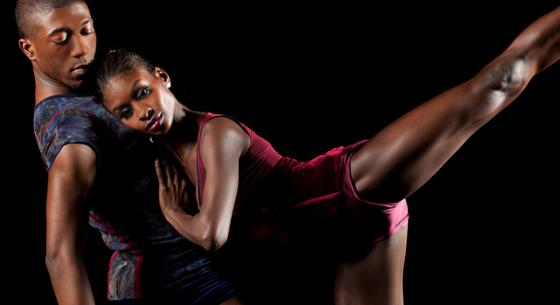Loss, Reinventions, and the African Diaspora
Jacob’s Pillow has an extraordinary history of innovation. Nestled into the Berkshire Mountains, it is named a National Historic Landmark for its cultural contributions to the United States. It began in 1931 when Ted Shawn conceived a dance community that embraced of the many facets of dance and celebrated its creators and performers, whatever their origin. His daring invention and radical inclusion made Jacob’s Pillow one of the primary platforms for the development of modern dance in America. He said, “Dance includes every way that men of all races in every period of the world’s history have moved rhythmically to express themselves.”
I am here, mindful of the history around me, to see the Dance Theatre of Harlem perform three works. The show begins under the watchful gaze of large portraits of founders Ruth St. Denis and Ted Shawn, which flank each side of the stage. The Ted Shawn Theatre comes to quiet, fans gently turning above, and the sound of rain falling drifts in through the louvers of the converted barn.
The first piece is Dancing on the Front Porch of Heaven (1993) by Ulysses Dove. It is a response to Dove’s loss of 13 friends and family in a short period of time. A church bell fills the hall and the music of Arvo Pärt (“Cantus in Memory of Benjamin Britten”) surrounds the dancers, dressed in bright white. A spotlight unites a circle of six, which breaks apart to form duos, trios, and quartets, each new grouping telling a story of a relationship that is no more. The dance is controlled and precise. The lines are attenuated with barely contained grief. The technique is beautiful and full of a contemporary majesty. As the dancers pause, I am reminded of Orpheus in the underworld, glancing back at what has vanished and can’t be restored. I see the lost lovers and friends appear in dynamic partnering, the men and women equally captivating. The bell rings. A moth flutters into the spot light and disappears again into the dark.
The second work is past-carry-forward (2013) by Tanya Wideman-Davis and Thaddeus Davis. This piece is a portrayal of the migration of African Americans from post-slavery south to the north. The music of the first section of the piece contains the scratchy sounds of an old record, insects humming, and bird song. It is a poignant echo of the history of Jacob’s Pillow itself. This area of the Berkshires was an important stop on the Underground Railroad. In the moment, I reflect on Ted Shawn’s early commitment to dancers of color, and I listen to the recorded crickets sing to the crickets singing outside. It’s seamless. The narrative of the dance pulls me back as a duo dances tentatively away from the rural setting. In moments they are jazz babies, giggling, and drinking champagne. The story moves on to military service and minstrel shows. We see an anonymous night porter, his face hidden and his movement modest. The couple passes the porter to reunite in an undefined and abstract future.
The final work is Contested Space (2012) by Donald Byrd. The piece opens with a male soloist twisting like a gyroscope to the sinuous jazz of an upright bass. It quickly shifts to the female corps throwing down classical technique to an industrial funk soundscape (Amon Tobin) with military precision. Contested Space is a story of partnering, often sexy, sometimes menacing, always disciplined. Dancers shimmy their whole bodies en pointe, and then slash across the stage on legs like scissors. There are daring lifts and transfers. Buried deep in the ballet vocabulary are flickers of popping and locking. A duo hints at of a pair of exotic birds in courtship and then becomes suddenly metallic. Was that a spasm of passion or a mechanical reverberation? Contested Space pushes and pulls, and never bores.
Note: Please join us to see Dance Theatre of Harlem at Northrop on February 17th!
